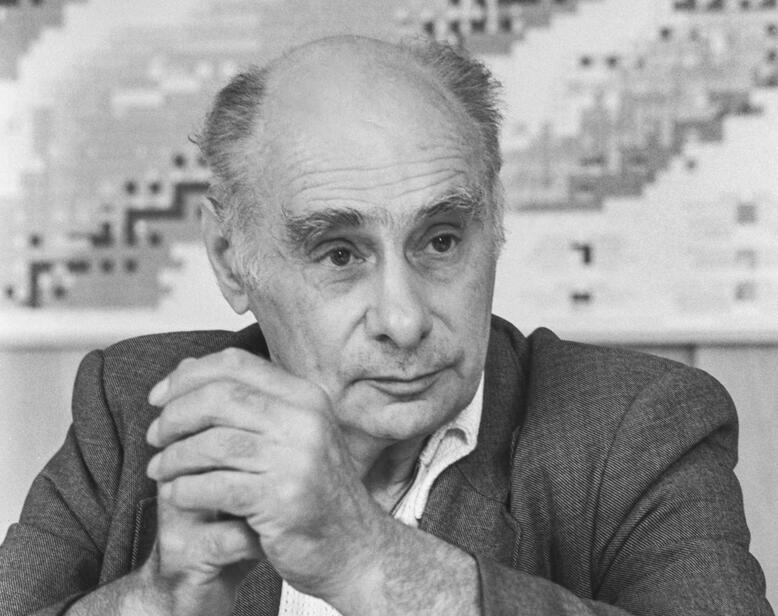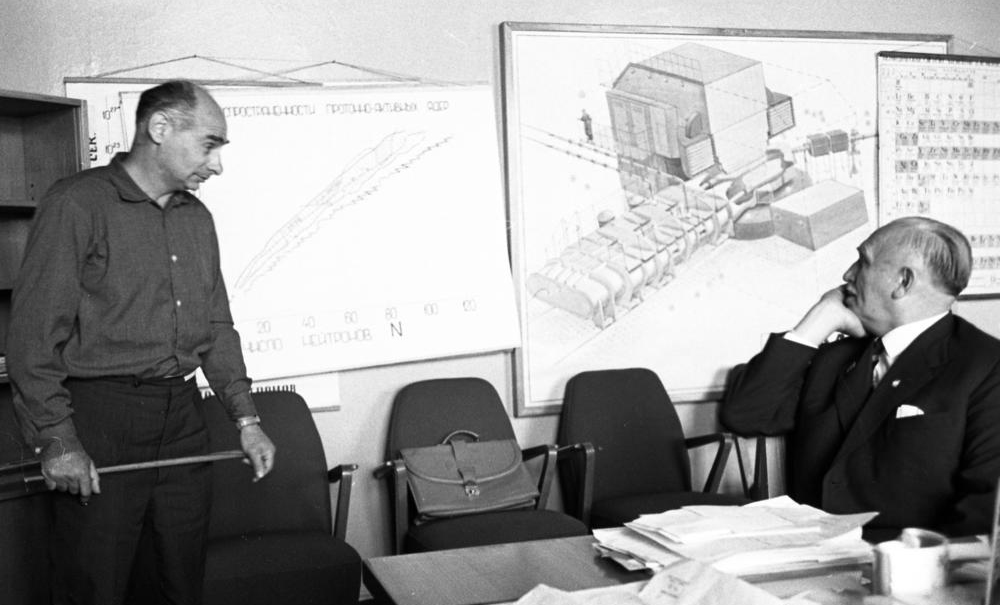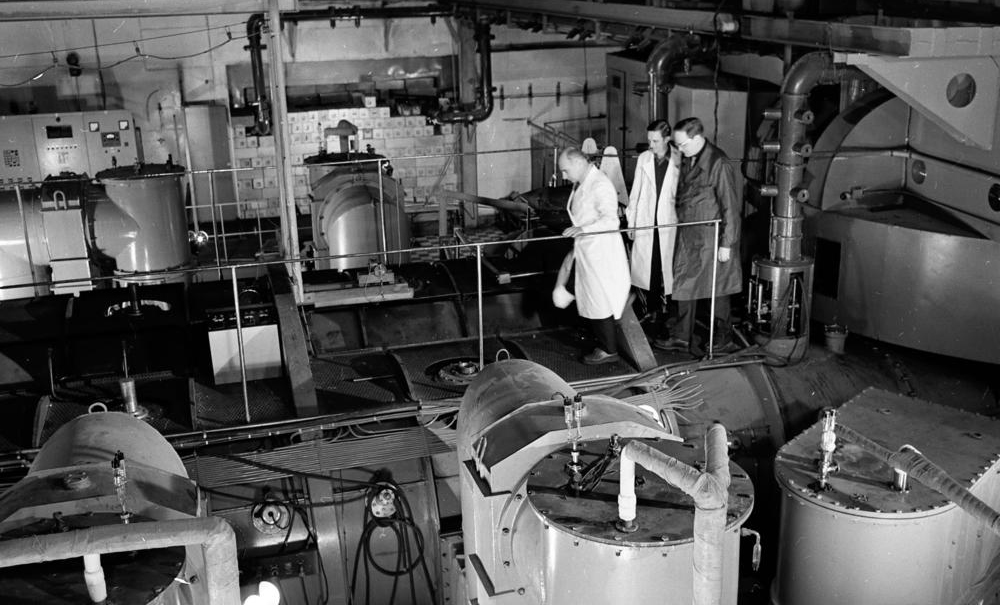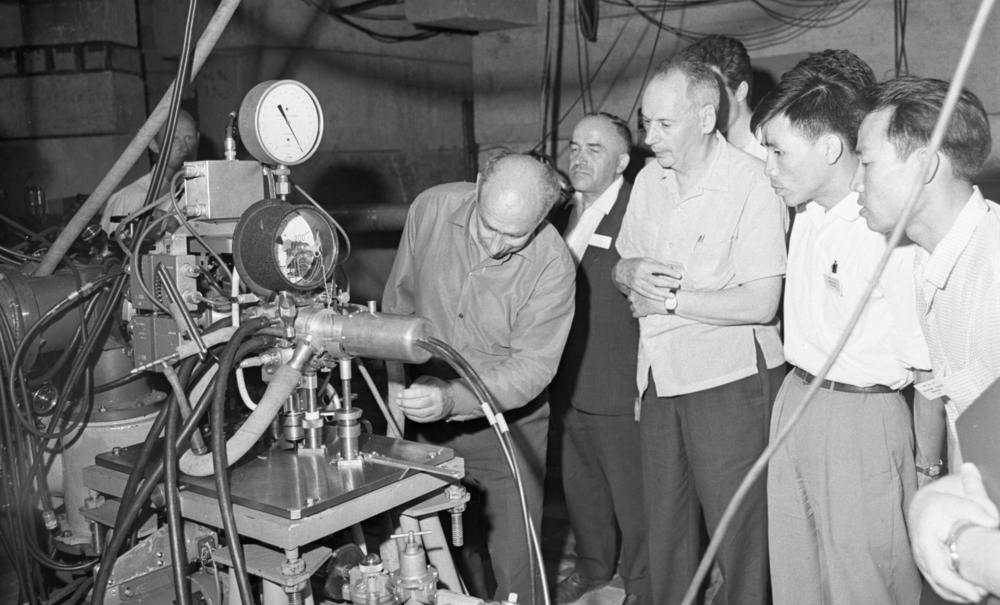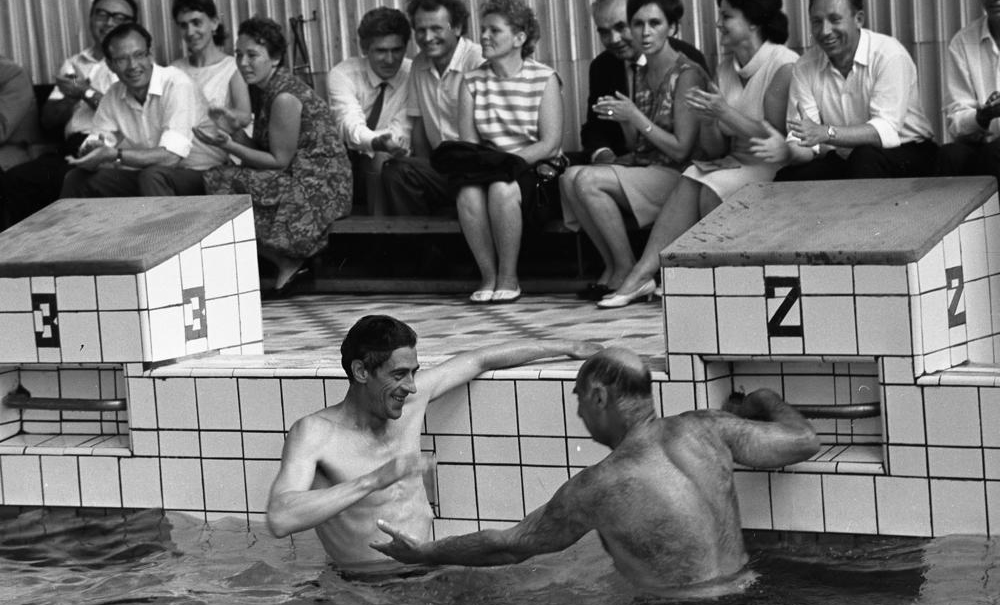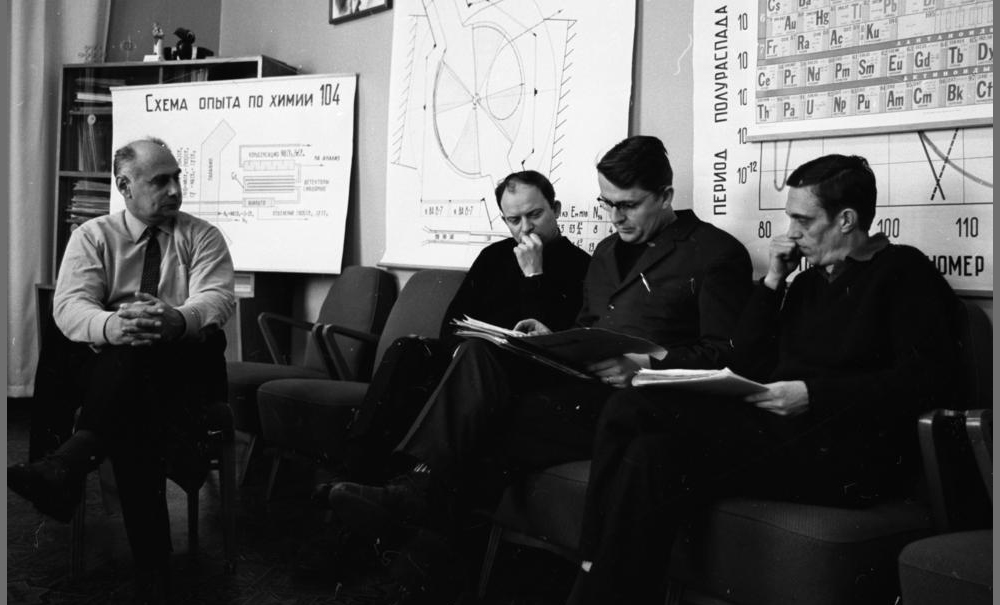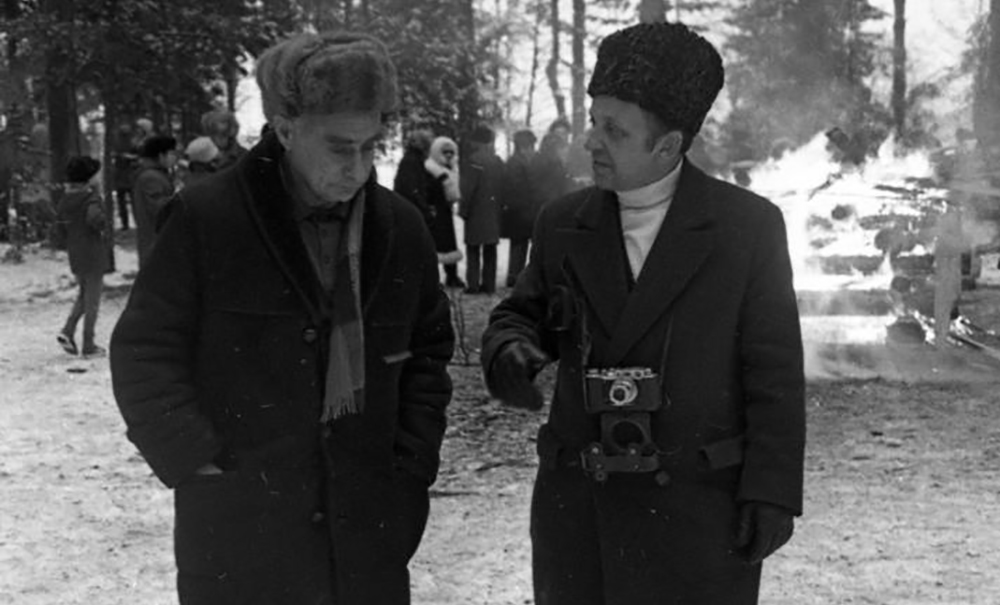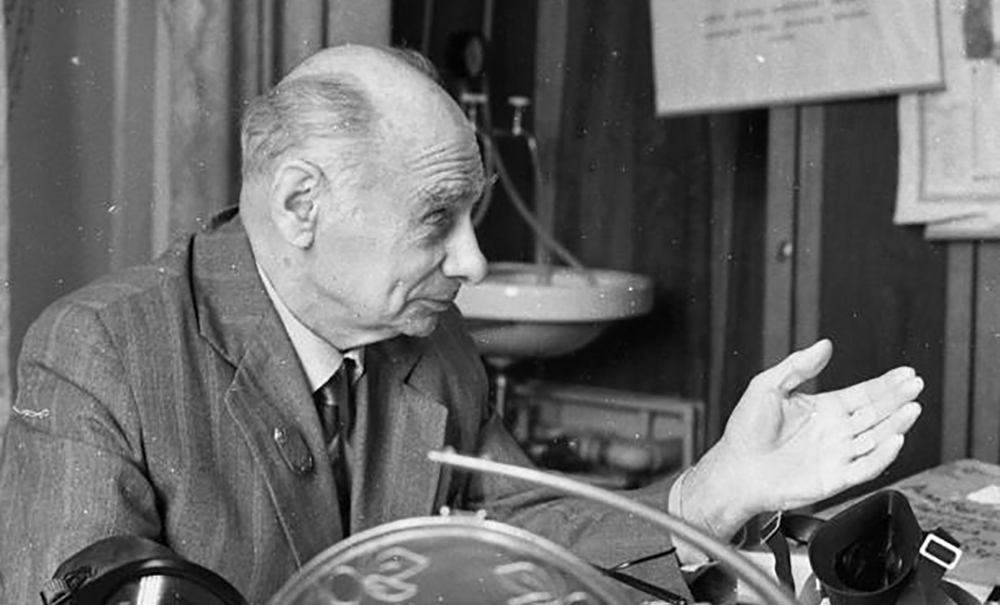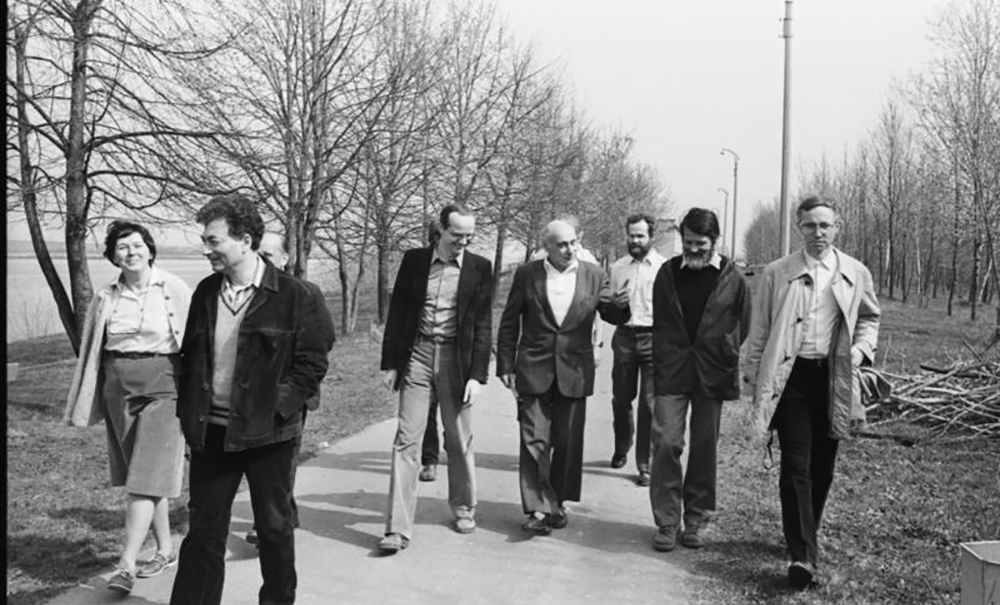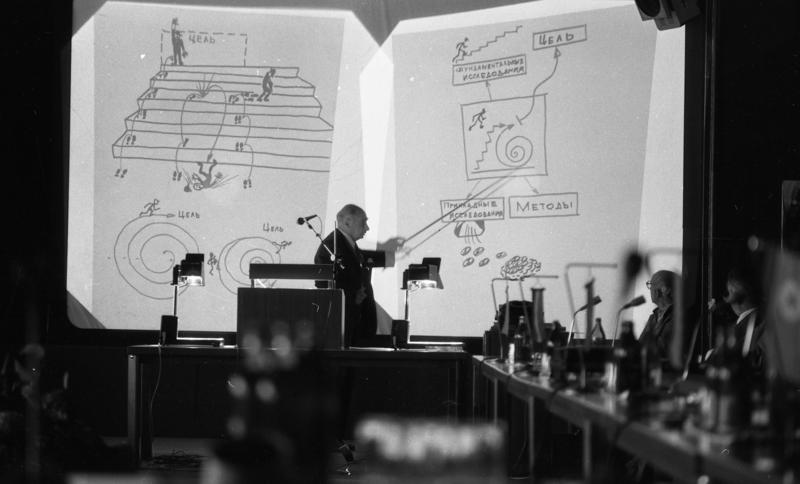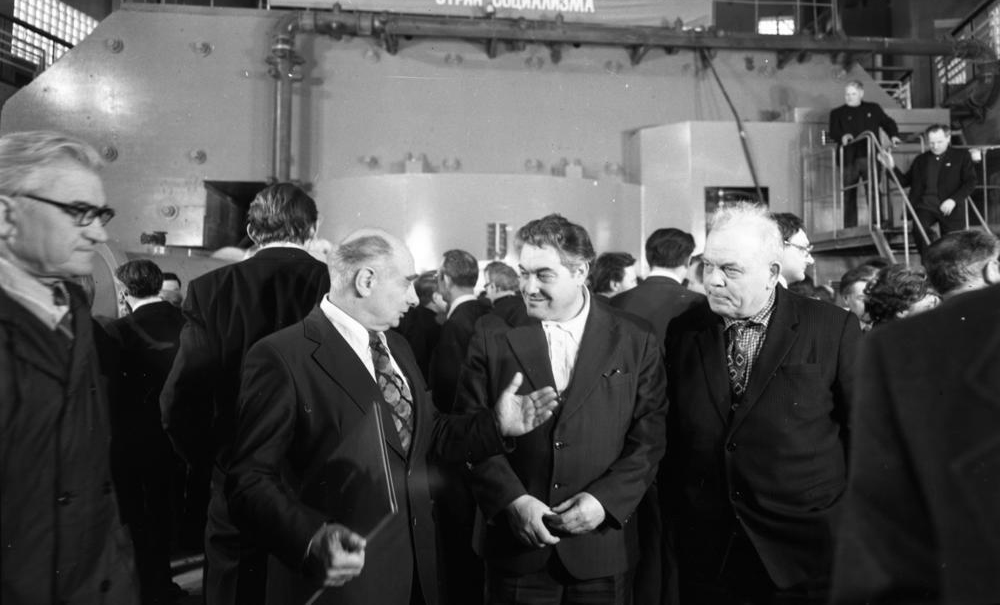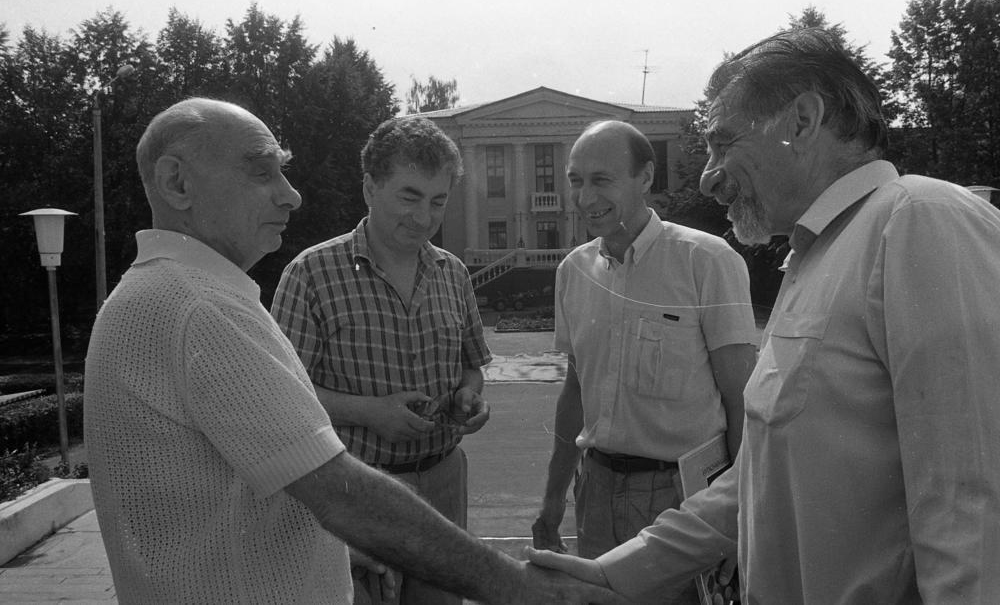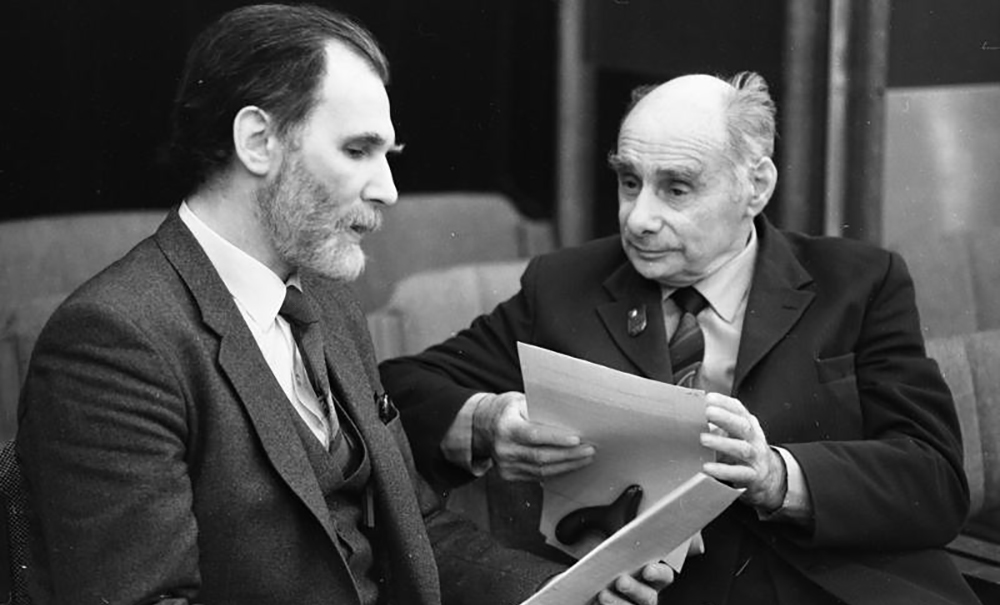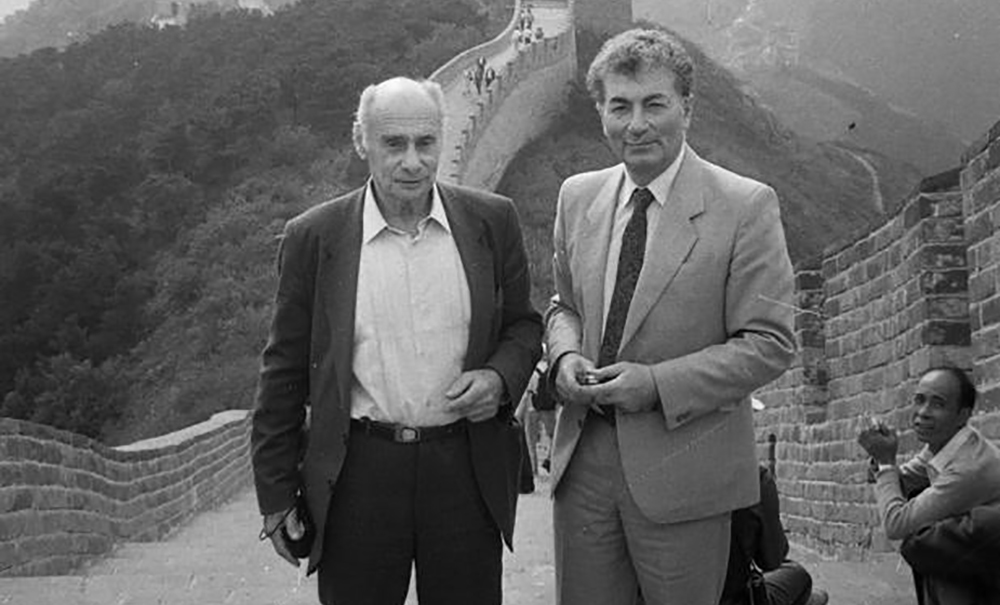Today marks 110th anniversary of birth of Georgy Flerov
News, 02 March 2023
On 2 March, the Joint Institute for Nuclear Research celebrates the 110th anniversary of the birth of an outstanding scientist Georgy Nikolaevich Flerov (1913–1990), Academician of the USSR Academy of Sciences, an author of several scientific discoveries, a founder and the first Director of the Laboratory of Nuclear Reactions JINR.
The future scientist was born in Rostov-on-Don. In 1938, Georgy Flerov graduated from the Engineering and Physics Faculty of Leningrad Industrial Institute. In 1936, he joined the laboratory of I. V. Kurchatov. Then, he moved to Kurchatov’s group at the A. F. Ioffe Physical-Technical Institute.
In 1939-1940, in collaboration with Lev Rusinov, Flerov demonstrated the emission of more than 2 neutrons in uranium nucleus fission. In 1940, together with Konstantin Petrzhak, he discovered a new kind of nuclear transmutation called uranium spontaneous fission.
At the beginning of the Great Patriotic War, Flerov volunteered to the front and took part in the battles to defend Leningrad. Later, he was called up for study at the Air Force Academy and served in the Air Defence Forces in Voronezh. Lieutenant Flerov wrote several letters from the front to Joseph Stalin and the State Defence Committee, justifying the importance of atomic bomb creation. His initiative resumed nuclear research in this area in the Soviet Union. In 1943, he joined a group of scientists under the leadership of Igor Kurchatov. The group was working on the Soviet atomic project.
The scientist was involved in the problem of nuclear fission physics of heavy elements, studied the cross-section of slow neutron interaction with various materials defining critical mass of plutonium and uranium-235.
In 1949, Georgy Flerov personally conducted a risky experiment on the critical mass determination of plutonium during the creation of the first Soviet atomic bomb RDS-1. He was responsible for the physical part of the explosion at the Semipalatinsk Nuclear Test Site.
In 1951, under his guidance, scientists developed methods and designed equipment for neutron and gamma-ray logging of oil wells. Since 1953, the researcher was involved in compound nuclei collision study and problems of new element synthesis.
After a one-year period of being the Head of the Sector at Kurchatov Institute of Atomic Energy of the USSR Academy of Sciences in Moscow, in 1957, Georgy Flerov was an organizer and the first Director of the Laboratory of Nuclear Reactions JINR. Flerov remained the permanent Head of LNR until 1988, in the last years of his life being the Honorary Director of the Laboratory. Here, under the guidance of Flerov and with his direct participation, researchers synthesised isotopes of new transfermium elements of the Mendeleev Periodic Table with numbers 101 (Md Mendelevium), 102 (No Nobelium), 103 (Lr Lawrencium), 104 (Rf Rutherfordium), 105 (Db Dubnium), 106 (Sg Seaborgium), 107 (Bh Bohrium) and studied their chemical and physical properties. Researchers of the Laboratory discovered spontaneously fissioning isomers and a phenomenon of delayed proton emission. They also developed methods of obtaining and accelerating multiple-charged heavy ions of heavy atoms and started experiments on superheavy element synthesis in heavy-ion reactions.
Technologies of track membranes developed by Academician Flerov were used to eliminate the consequences of the Chernobyl nuclear power plant disaster. Flerov was not satisfied only with the role of the author of the technology, and took a personal part in the elimination of the consequences of the Chernobyl accident.
Georgy Flerov was awarded the title of Hero of Socialist Labour (1949). He was a laureate of the USSR State Prizes (1946, 1949, 1975) and a laureate of the Lenin Prize (1967). He received many other state awards.
According to contemporaries, the famous scientist was a versatile and passionate person, unable to live at a reduced speed. He was proactive and energetic and went to bed and got up early. Georgy Nikolaevich treated his subordinates like a father, but at the same time he was demanding, hoping to get scientific results as soon as possible. He had an amazing scientific intuition. Thus, he predicted the existence of superheavy elements back in 1956, about half a century before their discovery.
Science was his whole life. He also preferred actively spending his free time. Thus, he was really fond of swimming. In addition, together with his wife, he went on tourist expeditions to Kamchatka, Siberia, and the Pamirs.
Chemical element 114 Flerovium (Fl), the Laboratory of Nuclear Reactions JINR, a street in Dubna where he lived, and the Dubna Lyceum No. 6 bear the name of Georgy Nikolaevich Flerov. In 1993, the Joint Institute established the Prize of Academician Georgy Flerov to scientists for outstanding scientific research in the fields of nuclear physics and nuclear chemistry. A monument to the scientist was erected in Dubna.
